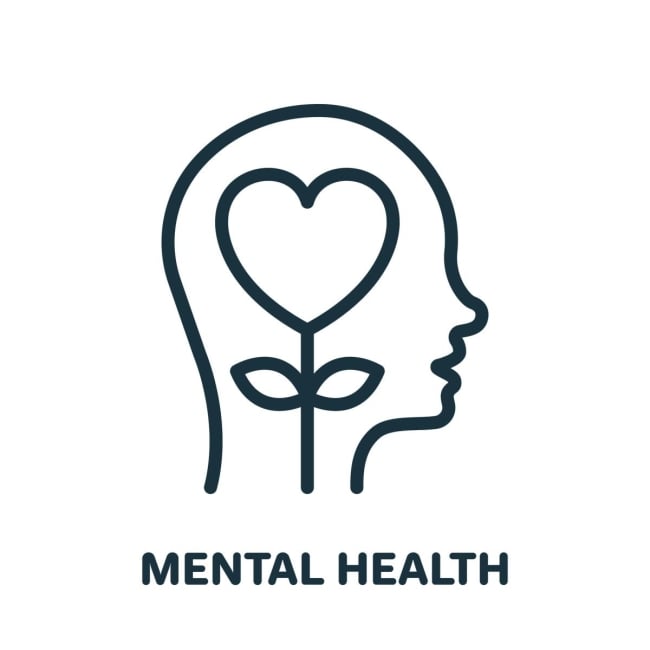You have /5 articles left.
Sign up for a free account or log in.

Anton Porkin/iStock/Getty Images
Higher education is failing students with mental health needs.
Demands for mental health resources were already climbing before the COVID-19 pandemic, and students now are reporting heightened stress, anxiety and depression as a result of the health crisis and the isolation, grief and economic uncertainty that it has caused. Eating disorders and disordered eating, already most common among young adults, remain an issue for college students, and a 2020 survey by the Centers for Disease Control showed that about 25 percent of adults between the ages of 18 and 24 had seriously considered suicide.
Even as leaders in higher education acknowledge the mounting mental health issues among students and allocate more resources to student well-being, colleges and universities don’t have an effective model for providing sufficient mental health services. Instead, they tend to use outdated managed-care approaches that limit the number of sessions in a one-size-fits-all approach. With the demand for more resources expected to grow, institutions need to move beyond the Band-Aid approach we currently employ and make it a priority to do a better job providing these critical services.
Admittedly, providing the necessary resources—expanding mental health services and sessions, paying more counselors a competitive salary, and making mental health and wellness a larger part of the campus culture—is expensive. But the cost is a poor excuse not to provide students with what they need and, like many effective higher education practices we assume are essential such as technology, the cost of inaction or keeping the status quo is far more expensive.
Decades ago, college and university leaders recognized pretty quickly the role that computers would play in the higher education ecosystem. We made a tremendous investment in technology on campus and couldn’t do our jobs today without it. We can make the same choice to find the funds to make mental health services a priority.
The return on investment would be significant. A 2012 survey of college students living with mental health conditions from the National Alliance on Mental Illness found that 64 percent of survey respondents who had dropped out of college did so because of mental health–related reasons. Of those students, 45 percent said they did not receive accommodations, and 50 percent did not access mental health services.
A fall 2020 survey by Active Minds found that about three-quarters of college students said their mental health suffered during the pandemic, with 18 percent saying it “worsened significantly.”
Institutions need to greatly expand the services they do offer to students. While telehealth options were useful and welcome during the height of the pandemic, virtual options are no longer appealing to all students. Students who live in residence halls or who have roommates prefer the privacy of in-person appointments, which in some cases can be more beneficial anyway. It’s crucial to have adequate space on campus to be able to provide this resource to them.
As noted above, we also need to recognize that some of the short-term approaches many institutions currently employ—such as limits on the number of counseling sessions—are not sufficient. If someone is suffering from grief or trauma, they need more than three or six sessions with a counselor. Those students need and deserve long-term, quality care, and we must find a way to make sure they have access to that care over the summer and across semesters.
And as they make plans to invest more in counselors and staff to help meet the growing needs of students, leaders should also be intentional that those staff members reflect the diversity of the student body, and that the services they are providing are racially and culturally responsive.
Faculty, too, need better tools and information to assist students with mental health needs. Students with mental health problems often show signs along the way, and we need to do a better job working with faculty so that they also know how to respond to those students, make accommodations and refer them to the resources they need. It’s part of what makes an effective educator.
At Oglethorpe University, we are redesigning our mental health services on campus so that they’re unlimited for all students. Our hybrid in-person and virtual counseling model allows students to access care 24-7. About 60 percent of our students are students of color, and our counselors reflect our student body. Oglethorpe is also partnering with other Atlanta-area graduate programs and a nearby residential treatment facility on training opportunities to further enhance our services.
There’s still much work to be done. Oglethorpe’s counseling center saw a 52 percent increase in requests for new appointments when it reopened in fall 2021, which we accommodated with our hybrid virtual/in-person model and a new staffing structure. About 78 percent of Oglethorpe students reported that COVID-19 negatively impacted their mental health. About 65 percent of new students seeking treatment graduated high school during the COVID-19 shutdowns. The tail of this pandemic is long, and mental health issues among college students are going to continue to increase as a result.
It’s clear that we in higher education need to do things differently. And it’s going to cost us a lot more if we don’t.




